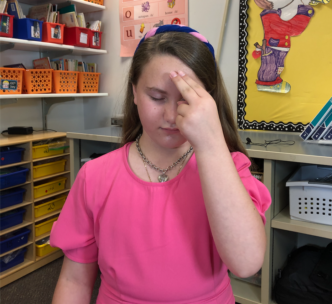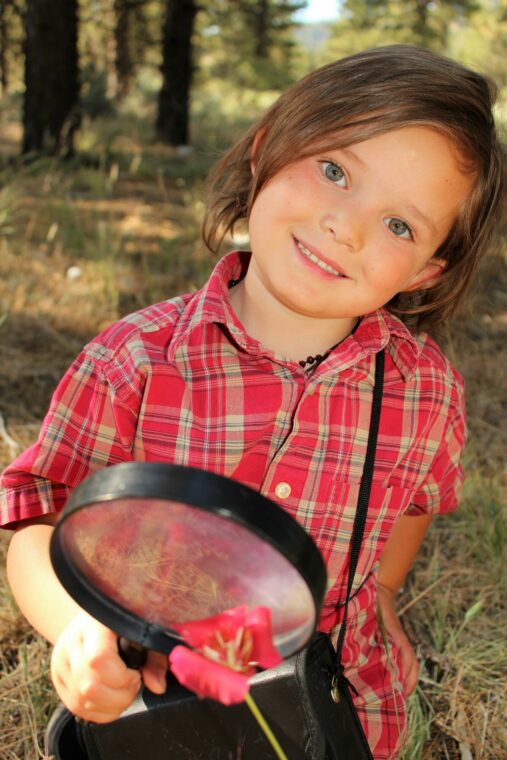
Whether you’re planning a new family or raising children from ages one to eightteen, having great parenting advice can really help you make healthier and better decisions. It’s no cakewalk, either. Parenting can be very challenging, especially parenting with the goal of raising well-adjusted and healthy people. Luckily, there are some amazing resources out there for new or struggling parents. We found our top three pieces of advice for raising children at any age that we’d like to share. Take a look at three picks below, presented by The Imagine Project, Inc.
Be Proactive and Healthy with Discipline
Discipline is a big part of a child’s upbringing. It helps them learn what is socially acceptable or what is safe to do without hurting themselves. However, far too many parents approach discipline the wrong way during the formative years, especially during the Terrible Twos. Toddlers have a tendency to be quite impatient and, as a result, become frustrated when they are unable to do something or have something happen. Because they cannot verbalize their emotions at this stage of development, coping with stress is almost impossible. With this in mind, “punishing” your toddler for having a fit will do nothing short of creating trauma. To discipline a toddler, simply physically remove them from the situation. This isn’t always super simple, but it is the best way to communicate that behavior like this isn’t acceptable while still being empathetic to the fact that they physically cannot cope with stress at this stage.
As your children grow older, it will be challenging in different ways. Some days will be easy and smooth, others will test your nerves and drive you to the brink. Enjoy those easy days, and when the tough ones come along, know nighttime will come. Listen and hear what your child is saying. If you are so frustrated you want to scream, then take a break. Go outside, in the other room, or just sit down and take a few breaths. Hard days are a normal part of parenting and they too shall pass. Don’t beat yourself up, tomorrow is a new day with new possibilities.
Always Be Consistent
Parenting is exhausting. However, it is so important to be consistent in the way that you communicate with and discipline your child through their school-aged years. Preschoolers in particular have a real knack for throwing tantrums that last forever, so many parents will simply give up and let them have their way. (Luckily, they are also very fun and sweet during preschool years as well.) It is key to be consistent in your discipline and “nos” despite your child’s Olympics-level resilience. Just as well, be consistent in how you positively reinforce behaviors and reward your children. Kids between two and four are absorbing a lot about the world around them and formulating their own personalities and opinions. By being consistent in praise and rewards, you’re letting your child know that they are doing their best. The more you listen, stay consistent, and stay positive in the early years, the easier it will be in the teen years.
Lead By Example
Believe it or not, parents are their children’s greatest role models. They will watch you carefully and learn who they should be in life primarily from you. To help them, be kind to others, show gratitude in different areas of your life every day, and be interested in learning yourself. If you are curious and want to learn new things in life, they will too. Eat healthy, go for walks, and take time for yourself so your children know these things are as important as working hard.
This is by no means a complete guide to raising a child — but every little bit can help in the long road. Above everything else, remember to love and listen to your child at every step along their journey toward adulthood. If your child is struggling, having them write their Imagine Story (you can write one with them) will help open up the doors of communication and give your child a voice to speak what’s in their hearts, especially if they aren’t able to express what they are feeling. You both will love the process—something you can do often.
Take care and thanks for listening,
Dianne
(Thank you to Amanda Henderson for your contributions in writing this article.)
Photo Credit: Pixabay.
Dianne is the founder and CEO of The Imagine Project, Inc., a nonprofit organization that helps children K-12 (and adults) process and heal from difficult life circumstances through expressive writing. Dianne has her Masters in Psychiatric/Mental Health Nursing, has written multiple books, is an international speaker, lives outside of Denver, CO, and has 3 grown children. Learn more about The Imagine Project at www.theimagineproject.org.

 Many people are curious about Emotional Freedom Technique (EFT), also called Tapping. Tapping is a tool anyone can use to help them deal with difficult emotions in life. All ages can be taught to use tapping, as young as 6 or 7 years old or as old as 100! It’s a simple, yet effective technique that can calm your nerves, relief anxiety, help you move through difficult emotions, and even help relieve physical pain and other ailments.
Many people are curious about Emotional Freedom Technique (EFT), also called Tapping. Tapping is a tool anyone can use to help them deal with difficult emotions in life. All ages can be taught to use tapping, as young as 6 or 7 years old or as old as 100! It’s a simple, yet effective technique that can calm your nerves, relief anxiety, help you move through difficult emotions, and even help relieve physical pain and other ailments.
 For children with learning disabilities, conventional in-school learning can be difficult, frustrating, and stressful. While developing a holistic curriculum for a child with a learning disability is complex, evidence suggests that playing an instrument is a valuable component of the learning process. The following article, presented by
For children with learning disabilities, conventional in-school learning can be difficult, frustrating, and stressful. While developing a holistic curriculum for a child with a learning disability is complex, evidence suggests that playing an instrument is a valuable component of the learning process. The following article, presented by  The ways that children use technology on a daily basis is changing. More and more, younger generations are spending prolonged periods of time using digital devices. Unfortunately, this extended screen time can have a plethora of adverse effects on children. Read further to learn more about these anticipated challenges and solutions that will help limit these potential dangers.
The ways that children use technology on a daily basis is changing. More and more, younger generations are spending prolonged periods of time using digital devices. Unfortunately, this extended screen time can have a plethora of adverse effects on children. Read further to learn more about these anticipated challenges and solutions that will help limit these potential dangers. The Imagine Project became a nonprofit a little over 5 years ago. We have grown tremendously in those 5 years, currently reaching over a quarter of a million kids! The journey of starting a nonprofit is always a challenging one with many obstacles and lessons, and we have survived and thrived! The lessons of business are expected, but the powerful lessons of life that the thousands of stories we’ve heard that go far beyond what we had expected. I’d love to share what we’ve learned.
The Imagine Project became a nonprofit a little over 5 years ago. We have grown tremendously in those 5 years, currently reaching over a quarter of a million kids! The journey of starting a nonprofit is always a challenging one with many obstacles and lessons, and we have survived and thrived! The lessons of business are expected, but the powerful lessons of life that the thousands of stories we’ve heard that go far beyond what we had expected. I’d love to share what we’ve learned. Transitioning to a Trauma Informed School has become an important movement across the United States, particularly in those schools with a high population of at-risk students. Schools in poorer communities, communities with high crime, even rural areas are seeing the positive effects of applying Trauma Informed principles into their overall curriculum. Even if your school does not have a high-risk student population, it’s important to understand that trauma is in all schools. Yes, it may be higher in certain communities, but as many know, the ACES research showed that 50% of all kids in white, middle class, well-educated communities have at least one traumatic experience before the age of 17. This means every school has students who’ve experienced trauma. Becoming a Trauma Informed School is of utmost importance in helping all children succeed in school, and in life.
Transitioning to a Trauma Informed School has become an important movement across the United States, particularly in those schools with a high population of at-risk students. Schools in poorer communities, communities with high crime, even rural areas are seeing the positive effects of applying Trauma Informed principles into their overall curriculum. Even if your school does not have a high-risk student population, it’s important to understand that trauma is in all schools. Yes, it may be higher in certain communities, but as many know, the ACES research showed that 50% of all kids in white, middle class, well-educated communities have at least one traumatic experience before the age of 17. This means every school has students who’ve experienced trauma. Becoming a Trauma Informed School is of utmost importance in helping all children succeed in school, and in life. Parents, teachers, admin, even grandparents are struggling with the difficult decision of; “Should I send my child back to the classroom setting?” Some believe kids should be back in school, some believe they should stay home, some feel a hybrid choice is the best option. The reality is there isn’t one set answer for all. Many factors need to be taken into account when the final decision is made and administration is doing the best they can to balance the situation at hand.
Parents, teachers, admin, even grandparents are struggling with the difficult decision of; “Should I send my child back to the classroom setting?” Some believe kids should be back in school, some believe they should stay home, some feel a hybrid choice is the best option. The reality is there isn’t one set answer for all. Many factors need to be taken into account when the final decision is made and administration is doing the best they can to balance the situation at hand. Stress is everywhere. You can almost feel it in the air. Our community, our state, our country, and the world are facing a difficult time—a global Coronavirus pandemic. Who would have thought a year ago we would be here, living in the new normal—unable to leave our homes, no school, no sports, and no playtime with friends (for kids and adults). With this new (temporary) normal we can find ourselves feeling a gamut of emotions—fear, stress, overwhelm, anger, terror, confusion, relief, even joy—we can feel all of these in a matter of minutes! If we are feeling these emotions, our kids are too.
Stress is everywhere. You can almost feel it in the air. Our community, our state, our country, and the world are facing a difficult time—a global Coronavirus pandemic. Who would have thought a year ago we would be here, living in the new normal—unable to leave our homes, no school, no sports, and no playtime with friends (for kids and adults). With this new (temporary) normal we can find ourselves feeling a gamut of emotions—fear, stress, overwhelm, anger, terror, confusion, relief, even joy—we can feel all of these in a matter of minutes! If we are feeling these emotions, our kids are too. Numerous studies have been conducted that reveal just how much stress today’s kids are under. Sadly, we see it every day revealed in bullying, anxiety, depression, chemical abuse, and even suicide. Youth are suffering with stress and trauma, and those labeled as “at risk”, such as foster kids, have more to overcome than the average student. One of the ways we are able to support them is through
Numerous studies have been conducted that reveal just how much stress today’s kids are under. Sadly, we see it every day revealed in bullying, anxiety, depression, chemical abuse, and even suicide. Youth are suffering with stress and trauma, and those labeled as “at risk”, such as foster kids, have more to overcome than the average student. One of the ways we are able to support them is through 